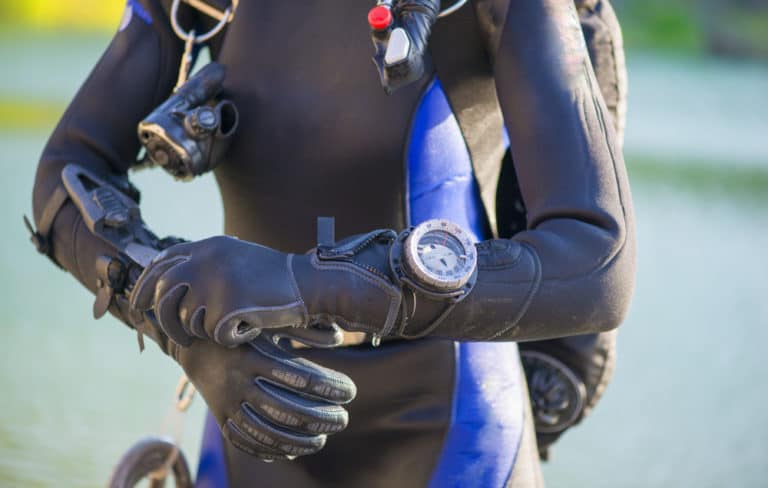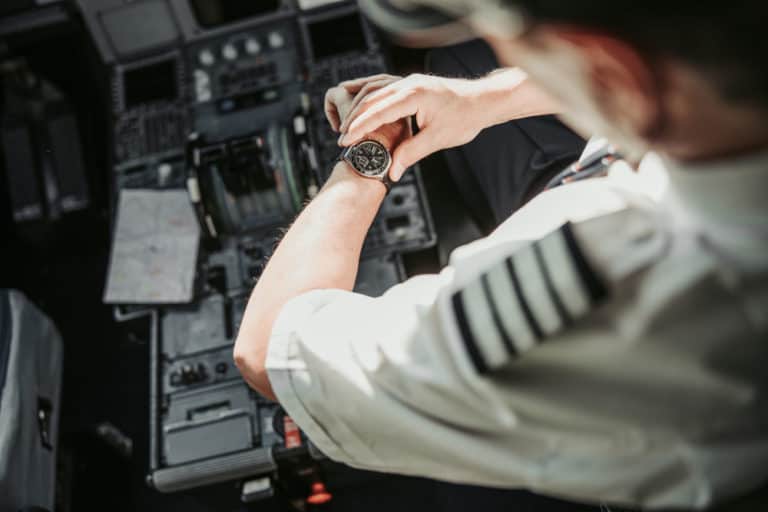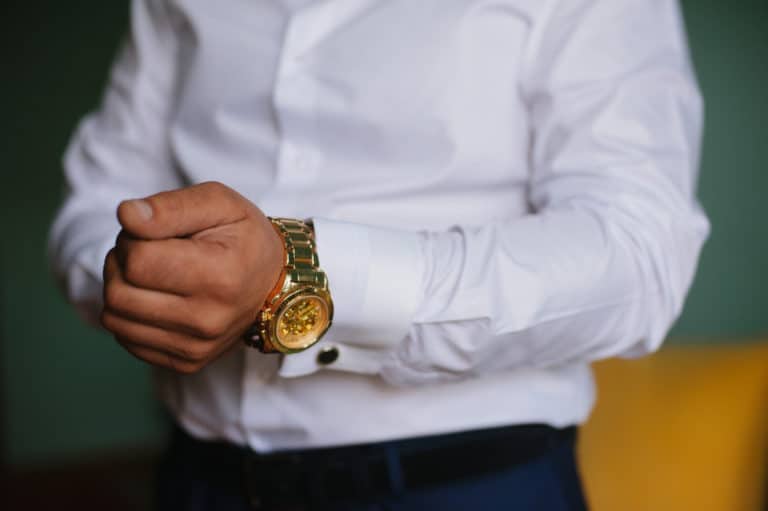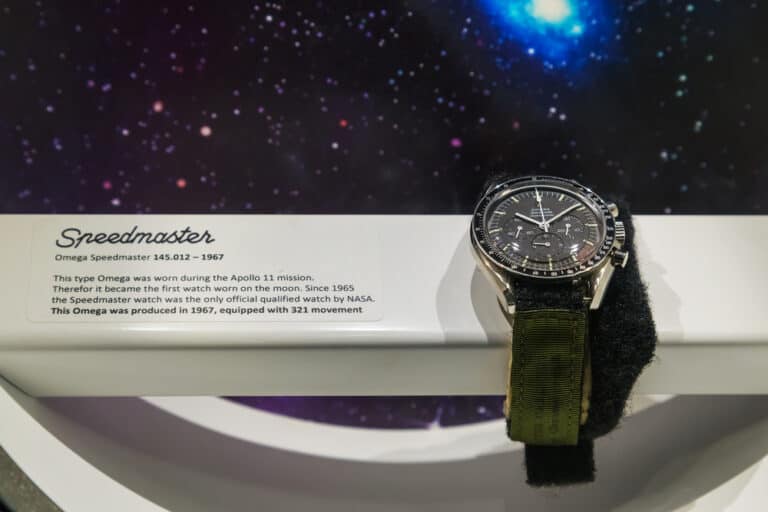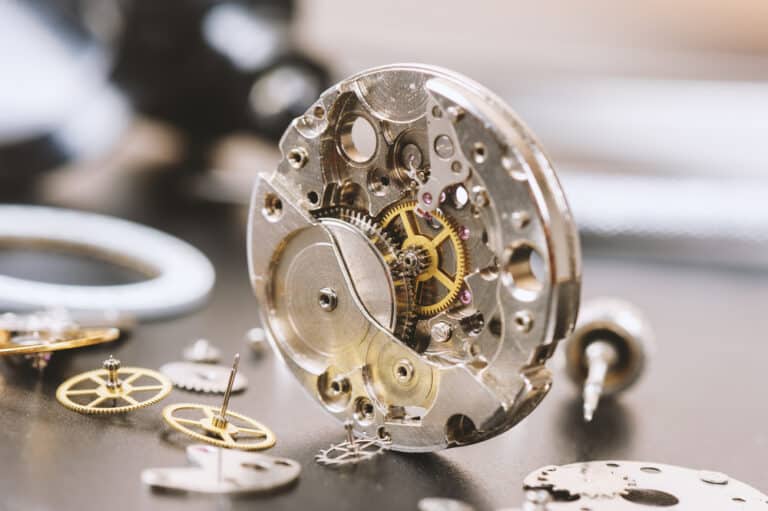Many watches are valuable assets and collector’s items, meaning it is essential to have systems in place to grade their worth and monetary value. So how can you tell the value of a watch by its serial number?
Serial numbers are unique numbers given to each watch of a specific manufacturer. A serial number is a marker of authenticity and helps buyers/collectors identify the watch, its model, date, manufacturer, style, and value. Serial numbers can be found on the watch or via supporting sources.
To better understand the importance of watch serial numbers, we will briefly explain the difference between a serial number and a reference number; we will explore how you can find a watch’s serial number.
What Is A Watch Serial Number?
Typically reserved for luxury watch brands like Rolexes, a serial number is a unique method of identification to confirm the authenticity of a watch – since each unique watch is assigned its serial number.
Consequently, one can equate the uniqueness of a watch’s serial number to that of our unique fingerprints and how they can be traced back to individual people.
Where Do I Find A Watch’s Serial Number?
Sometimes finding a watch’s serial number can be a lengthy and tricky process; fortunately, there are six familiar places one can look to find a watch’s serial number:
- On the back of the watch,
- Between the lugs,
- Near the movement of the watch,
- Within the case back,
- Among the watch’s paperwork,
- On an online database.
1. On The Back Of The Watch
Some modern watch brands have their serial numbers engraved on the back of the watch. However, don’t confuse a serial number with a reference number.
When in doubt, simply type in the brand of your watch along with the number on the back of the watch to see if it corresponds with the serial or reference number patterns of that specific watch manufacturer.
2. Between The Lugs
Generally speaking, the model and serial numbers of Rolex watches can be found between the lugs (although it may be possible that other watch brands do the same with specific models.)
Remove your bracelet or strap and examine the lugs to see if there is a model and/or serial number. Generally speaking, a serial number consists of eight digits, while a model number is between four and six digits.
When in doubt, cross references the numbers with the watch brand online to see which are serial numbers and which are model numbers.
3. Near The Movement Of The Watch
If you own a modern watch with a transparent, sapphire back case, you can see the watch’s movement from the back. Although it can be challenging to see a serial number through the watch’s movement, it is worth looking for a serial number with a jeweler’s loupe before opening the case back.
4. Within The Case Back
Vintage watches are more likely to have the serial number in the watch’s case rather than engraved on the back, visible through a transparent back or between the lugs. When opening a watch’s case back to look for a serial number, it is advisable to seek a professional jeweler’s services.
The reason is that opening the back of a watch case poses a risk to the functioning and condition of the watch if the incorrect tools and/or techniques are used to open the watch’s case back.
5. Among The Watch’s PaperWork
If you are unable to find the watch’s serial number on the watch itself, or you want to save time looking at alternative sources before inspecting your watch/your watch is inaccessible, the best starting point is any paperwork associated with the watch.
Examples of paperwork that could include the watch’s serial number include, but are not limited to, receipts, warranties, instruction manuals, reports from certified antique collectors, or repair reports from professional jewelers that may have worked on the watch.
6. On An Online Database
Finally, many watch manufacturers have online databases that you can use to search for/try and find your watch’s serial number.
If you are unable to navigate or use the search functionality of a manufacturer’s website, many have support channels you can use to speak to customer service electronically, telephonically, or in person.
What Other Factors Determine A Watch’s Value?
Although serial numbers confirm the identity of the watch and can provide a lot of information to help determine a watch’s value, there are other factors that determine the value of a watch:
- The watch manufacturer,
- The materials used,
- Mechanics and movement,
- The age and condition of the watch.
1. The Watch Manufacturer
Certain watch brands, manufacturers, and models retain their value better than others. Some examples of luxury watch brands that maintain their value are (to name a few):
- Rolex,
- Omega,
- Cartier,
- Jaeger-LeCoultre,
- Patek Philippe,
- IWC,
- Breitling,
- Audemars Piguet,
- Panerai.
2. The Materials Used
The type of material used can affect the value of the watch, mainly if the watch includes precious metals and materials whose price fluctuates and/or increases over time, like gold, platinum, or diamonds.
3. Mechanics And Movement
The quality of the watch, its movement, and up-to-date movement services will increase the value of a watch compared to one that is in disrepair.
4. The Age And Condition Of A Watch
Finally, older antique watches may fetch higher prices than modern timepieces, provided their mechanics are in good working order and the condition of the watch is acceptable.
Should I Share My Watch’s Serial Number?
You should never share the whole serial number of your watch because watchmakers can use that number when replicating watches of your brand, thus demising the value of your watch and making collectors question its authenticity.
Instead, if you need to provide your serial number, you should give the first few digits of your watch’s number, replacing the rest of the number with “xxxx.”

Conclusion
In conclusion, watch serial numbers are an easy and reputable way of identifying a watch and evaluating its worth.
References
- https://antiques.lovetoknow.com/collectibles/antique-pocket-watches
- https://www.watchfinder.co.uk/serial-numbers
- https://www.chrono24.com/info/valuation.htm
- https://www.bobswatches.com/rolex-serial-numbers
- https://www.ablogtowatch.com/the-value-question-how-to-determine-if-a-wristwatch-is-worth-the-price/
- https://www.gearpatrol.com/watches/a34428307/how-to-find-your-watch-serial-number/

